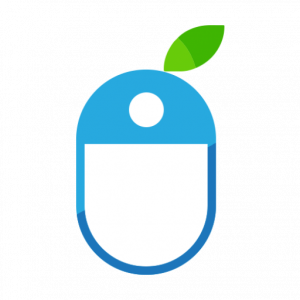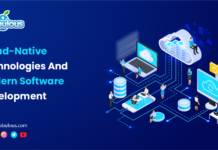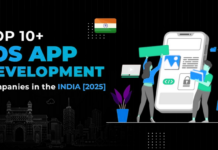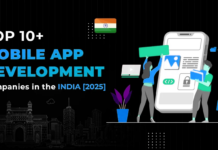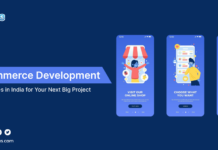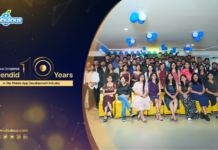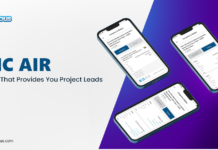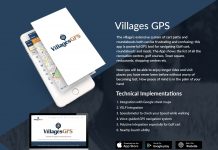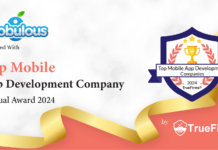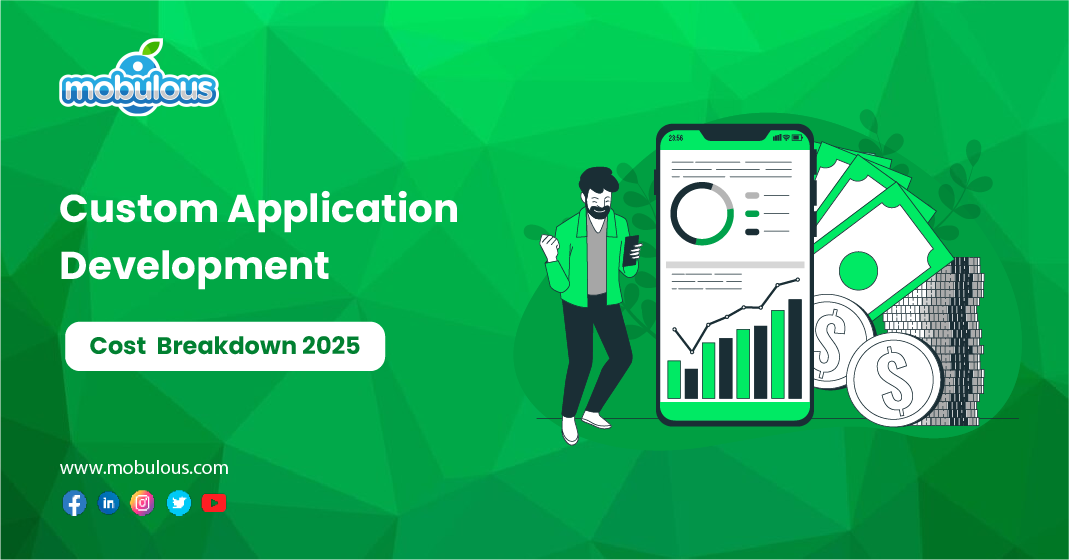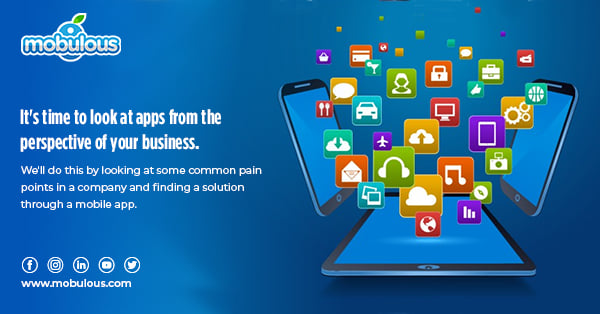Custom Application Development Cost Breakdown 2025
Custom application development costs in 2025 range from USD 15,000 to USD 150,000 and more for small to medium-sized apps, whereas enterprise-level solutions can surpass USD 150,000.
In 2025, the custom application development landscape will be constantly evolving and will be influenced by technological advancements and market demands. Hence, determining the exact cost of custom application development is important to get the most out of your project.
So, move ahead and continue this blog to understand the detailed breakdown of custom application development costs This insight will provide you with a comprehensive analysis of how to budget and allocate resources efficiently for technical projects. Let’s dive right in to understand better!
For Query:- Seek Help From a Top Mobile App Development Company!
What is Custom Application Development?
Custom application development is a systematic approach to designing, developing, testing, and maintaining computer programs and apps. It involves different stages such as requirement analysis, planning, coding, testing, and app deployment.
Custom app developers leverage different programming languages, tools, and frameworks in order to build robust custom application development solutions that fulfill business needs and client requirements.
The procedure follows an approach like Waterfall or Agile and requires collaboration between developers, designers, and stakeholders in order to deliver functional, effective, and user-focused custom application products.
Also Read:- How Much Does Software Development Cost in 2025!
Benefits of Custom Application Development
The strategic implementation of custom application development can transform businesses, create competitive advantages, and improve productivity in today’s technical landscape of 2025. The highly advanced benefits of custom application development are given below:
Also Read:- How to Create an App? A Beginner’s Guide!
1. Enhanced Business Efficiency
Custom application development solutions simplify operations by automating repetitive tasks and optimizing workflows. They integrate smoothly with existing systems, reducing manual intervention and human error.
Well-designed custom applications can substantially decrease processing time, enable employees to focus on more strategic tasks, and enhance data accuracy in order to emphasize more strategic tasks that ultimately lead to elevated productivity and cost savings.
2. Improved Customer Experience
Customized custom application apps allow businesses to deliver personalized experiences that fulfill specific specific customer necessities. Through intuitive interfaces, tailored features, and faster response times.
Modern custom application solutions also provide beneficial insights into customer behavior that enable businesses to make data-driven enhancements to their services.
3. Competitive Market Advantage
Tailored custom application development provides businesses with exceptional tools and capabilities that set them apart from competitors. By developing advanced solutions, firms can offer different features and services that are not available with off-the-shelf projects.
This exclusivity helps establish market leadership and creates barriers to entry for the competitors, providing a competitive market advantage.
4. Scalability and Flexibility
Purpose-built custom applications can seamlessly adapt to the ever-changing needs and evolving market conditions. The ability to modify and expand functionality as needed, ensuring long-term viability and return on investment.
This flexibility enables firms to respond quickly to new opportunities and challenges without being constrained by generic custom application limitations.
5. Enhanced Security and Compliance
Custom application development allows organizations to enforce robust security measures customized to their specific requirements and industry regulations.
By controlling the entire application development process, firms can ensure their custom application adheres to the latest security protocols and compliance standards, thus reducing susceptibility to cyber threats.
6. Data-Driven Decision Making
Modern custom application solutions provide robust analytics and reporting capabilities that transform raw data into actionable insights.
This enables businesses to make informed decisions depending on real-time information, predict market changes, identify trends, and optimize their operations for maximum profitability and efficiency.
Custom Application Development Costs
The cost of custom application development is around USD 15,000 to USD 150,000. This pricing range generally differs, depending on project scope, complexity, and requirements.
Basic apps generally start at USD 15,000 to USD 50,000, whereas complex enterprise solutions can exceed to USD 150,000. These costs encompass diverse factors such as custom application development team composition, technology stack, project complexity, and geographical location.
Additional considerations include ongoing maintenance, updates, cloud hosting fees, and security patches, which can add 15 to 25% annually to the initial custom application development costs.
The average hourly rate for custom application developers varies significantly, i.e., USD 150-200 in North America, USD 80-120 in Western Europe, and USD 40-60 in Eastern Europe and Asia.
Key Factors Affecting Custom Application Development Costs
Understanding the different components that affect custom application development costs is essential for accurate project planning and budgeting. Let’s have a detailed discussion on the key factors that influence custom application development costs:
1. Complexity and Scope of the Project
Project complexity directly affects the custom application development time, overall costs, and resource necessities. Simple apps with basic features might need minimal development effort, whereas complex systems with multiple integrations, comprehensive databases, and advanced algorithms demand more resources.
The scope, including the system interactions, the number of features, and user roles, substantially impacts the custom application development timeline and team size required, ultimately affecting the final cost.
2. Type of Custom Application (Web, Mobile, Desktop, Enterprise, SaaS, etc.)
Diverse custom application types need different levels of expertise and custom application development approaches. Web apps might need cross-browser compatibility and responsive design, whereas mobile applications need platform-specific development, i.e., iOS and Android.
Enterprise solutions usually demand complex integrations and scalability considerations. SaaS products need subscription management, robust cloud infrastructure, and multi-tenancy architecture, each adding different cost considerations to the custom application development process.
For Query:- Seek Help From A Web App Development Company!
3. Technology Stack and Tools Used
The choice of programming languages, libraries, frameworks, and development tools substantially affects the cost of custom application development. Modern technologies might have higher initial development costs but offer better long-term scalability and maintenance.
Some technologies need specialized custom application developers who command higher rates. In addition to this, licensing fees for frameworks, commercial tools, and third-party services must be considered in the overall tech stack costs.
Also Read:- Most Delinquent Mobile App Development Trends in India!
4. Location and Hiring Model of Developers
custom application developer rates differ substantially by geographic location, with North American developers generally charging higher rates than those in Eastern Asia or Europe.
The hiring model, i.e., whether in-house, outsourced development teams, or freelance impacts both long-term and immediate costs. Each model brings different management requirements, and resource availability considerations that impact the total project budget.
5. UI/UX Design and Prototyping
Investment in the user interface and experience design is essential for custom application success. This includes wireframing, user research, iterative design processes, and prototyping.
High-quality UI/UX design needs experienced designers and multiple revision cycles. Creating interactive prototypes and conducting user testing sessions adds to the initial custom application development costs but can reduce costly changes in the later stages of the custom application development.
6. Security and Compliance Requirements
Meeting security standards and compliance regulations usually requires substantial investment. This normally includes secure authentication systems, enforcing encryption, and data protection measures.
Industry-specific compliance requirements (like GDPR, HIPAA, or PCI-DSS) necessitate additional regular audits, security features, and specialized development practices, all contributing to higher custom application development and maintenance costs.
7. Maintenance and Post-Launch Support
Ongoing maintenance costs generally account for 15 to 25% of the initial custom application development budget on an annual basis. This generally includes security updates, bug fixes, feature improvements, and performance optimization.
Regular monitoring, server maintenance, backup systems, and user support services are paramount post-launch expenses. In addition to this, scaling infrastructure to accommodate growing user bases and data volumes contributes to long-term maintenance costs.
Custom Application Development Cost Breakdown by Development Stage
Understanding the cost distribution across various custom application development stages helps in better budget planning and resource allocation. The comprehensive breakdown of cost by the stages of custom application development is mentioned below:
1. Planning and Requirement Analysis
Planning and requirement analysis is the initial stage that generally consumes 10 to 15% of the total budget. It generally involves requirement gathering, stakeholder meetings, feasibility studies, and market research.
Creating comprehensive documentation, establishing technical specifications, and demonstrating project scope are essential activities. custom application development teams also examine competitors, create risk mitigation strategies, and identify potential challenges during this stage.
2. Design and Prototyping
Prototyping and design generally account for 15 to 20% of the overall budget which includes creating mockups, wireframes, and interactive prototypes.
UI/UX designers work on user flow diagrams, brand integration, and visual designs. Different revision cycles and stakeholder feedback sessions ensure the design fulfills user expectations and business necessities.
3. Development and Coding
The core custom application development phase consumes 40 to 50% of the total budget and involves actual coding, API integration, database development, and feature implementation.
custom application development experts work on front-end and back-end components, ensure proper system architecture, and enforce security measures. Regular code reviews and documentation are vital parts of this stage.
4. Testing and Quality Assurance
Testing generally 15 to 20% of the project budget, including unit testing, system testing, integration testing, and user acceptance testing.
QA teams conduct security audits, performance testing, and cross-platform compatibility checks. Bug fixing and optimization cycles ensure the custom application meets quality standards.
5. Deployment and Post-Launch Maintenance
This is the final stage of custom application development that takes 10 to 15% of the initial budget plus ongoing maintenance costs. Activities include app deployment, server setup, user training, and data migration.
Post-launch support, security updates, bug fixes, and performance monitoring are essential for maintaining custom application functionality and user satisfaction.
Cost Estimation Based on Custom Application Type
Different types of custom applications require varying levels of investment due to their exceptional complexities and requirements. Let’s have a detailed breakdown of the estimated costs based on the type of custom application development:
1. Basic Web Application Cost
Simple web app development generally ranges from USD 17,000 to USD 100,000. Basic custom application development costs include front-end app development, basic back-end functionality, crucial features, and database setup.
Custom application development time generally spans 3 to 6 months, depending on the feature set and complexity. This category includes informational websites, simple booking systems, and basic eCommerce platforms.
2. Mobile App Development Cost
Mobile app development costs range from USD 15,000 to USD 150,000 and more per platform, depending on the type of app development and the level of complexity.
Native app development for Android and iOS requires platform-specific expertise. This cost covers UI/UX design, app store optimization, back-end integration, and compliance with platform guidelines. Complex features like offline functionality or real-time sync increase the cost of development.
For Guidance:- Seek Help From An iOS App Development & Android App Development Company!
3. Enterprise Custom Application Development Cost
Enterprise custom application generally costs between USD 20,000 to USD 150,000. These systems need complex integrations, scalable architecture, and robust security measures.
The pricing structure includes customization for specific business processes, comprehensive documentation, and employee training modules. Enactment or implementation usually takes 6 to 12 months.
4. SaaS Product Development Cost
SaaS development typically ranges from USD 20,000 to USD 200,000 for initial release. The costs include multi-tenant architecture, automated billing systems, scalable cloud infrastructure, and subscription management.
Ongoing SaaS product development and maintenance generally require substantial investment in the latest features and new updates.
5. Custom AI and Blockchain custom application Development Cost
Advanced technology solutions start from USD 25,000 and can exceed USD 200,000. Artificial Intelligence & Machine Learning (AI/ML) and Blockchain custom application development involve professional expertise in AI algorithms, blockchain protocols, or machine learning models.
The costs of AI and Blockchain include data processing capabilities, comprehensive testing phases, and complex computational requirements.
How to Optimize Custom Application Development Costs?
Efficient cost optimization strategies can help you maintain quality while managing your budget constraints. Let’s see how you can reduce your custom application development costs with simple and easy key approaches that should be considered carefully:
1. Choosing the Right Development Team
Select the right custom application development team depending on their experience, expertise, and cost-efficiency. Make sure to consider hybrid teams incorporating remote and local talent.
Analyze their communication abilities, technical skills, and cultural fit. When you select a proper team for your custom application development, it reduces rework, ensures better project outcomes, and enhances efficiency.
2. Using Agile Development Methodologies
Enforce Agile practices for better project flexibility and control. Continuous feedback, regular sprints, and iterative custom application development help recognize and fix issues early.
This methodology enhances productivity, reduces waste, and enables better resource allocation while maintaining focus on priority features.
3. Leveraging Open-Source Technologies
Leverage established open-source solutions in order to reduce custom application development costs, including libraries, frameworks, and tools with active community support.
Open-source technologies can substantially reduce licensing fees while providing rusted custom application solutions for common functionality.
4. Outsourcing vs. In-House Development
Evaluate outsourcing opportunities carefully against maintaining an in-house team. Consider factors like project complexity, budget constraints, and timeline.
Outsourcing can provide you access to specialized custom application development skills and reduce overhead costs, whereas in-house custom application development offers better control and communication.
5. Cost Reduction Through MVP Development
Start with a Minimum Viable Product, i.e., MVP by focusing on core features. This methodology enables market validation before substantial investment.
Seek user feedback early, scale gradually, and prioritize crucial features based on actual market response and user needs.
The Bottom Line
Custom application development in 2025 demands strategic technological insight and financial planning. As digital transformation accelerates, businesses must balance innovation and strategies with cost-effectiveness.
By understanding key cost drivers, utilizing advanced technologies, and adopting flexible custom application development approaches, businesses can optimize their custom application development investments.
Successful projects require a holistic approach that considers market dynamics, long-term scalability, and technical complexity while maintaining a keen focus on delivering value-driven solutions.
Contact Mobulous For More!
FAQs — Custom Application Development Cost
Q. What is the average cost of custom application development in 2025?
Ans. Custom application development costs vary widely, ranging from USD 15,000 for simple applications to over USD 150,000 for complex enterprise solutions. Factors like project complexity, technology stack, team location, and specific requirements significantly influence the total investment needed for custom application development projects.
Q. Is outsourcing custom application development more cost-effective?
Ans. Outsourcing can reduce costs by 30-50% compared to in-house development. It provides access to global talent, reduces overhead expenses, and offers flexibility. However, success depends on choosing the right development partner, clear communication, and well-defined project requirements.
Q. How can I reduce custom application development costs?
Ans. Cost reduction strategies include using Agile methodologies, developing an MVP, leveraging open-source technologies, carefully selecting development teams, and prioritizing essential features. Effective planning, clear requirements, and iterative development can significantly optimize overall project expenses.
Q. What is the difference between web, mobile, and enterprise custom application development costs?
Ans. Web applications typically cost $20,000-$150,000, mobile apps range from $20,000-$150,000 per platform, and enterprise solutions can cost $20,000-$200,000. Costs vary based on complexity, features, integration requirements, and the specific technological needs of each custom application type.
Q. How do emerging technologies impact custom application development costs?
Ans. Emerging technologies like AI, blockchain, and cloud computing can increase initial development costs but offer long-term efficiency and innovation benefits. They require specialized skills and more complex infrastructure, potentially adding 20-50% to development expenses.
